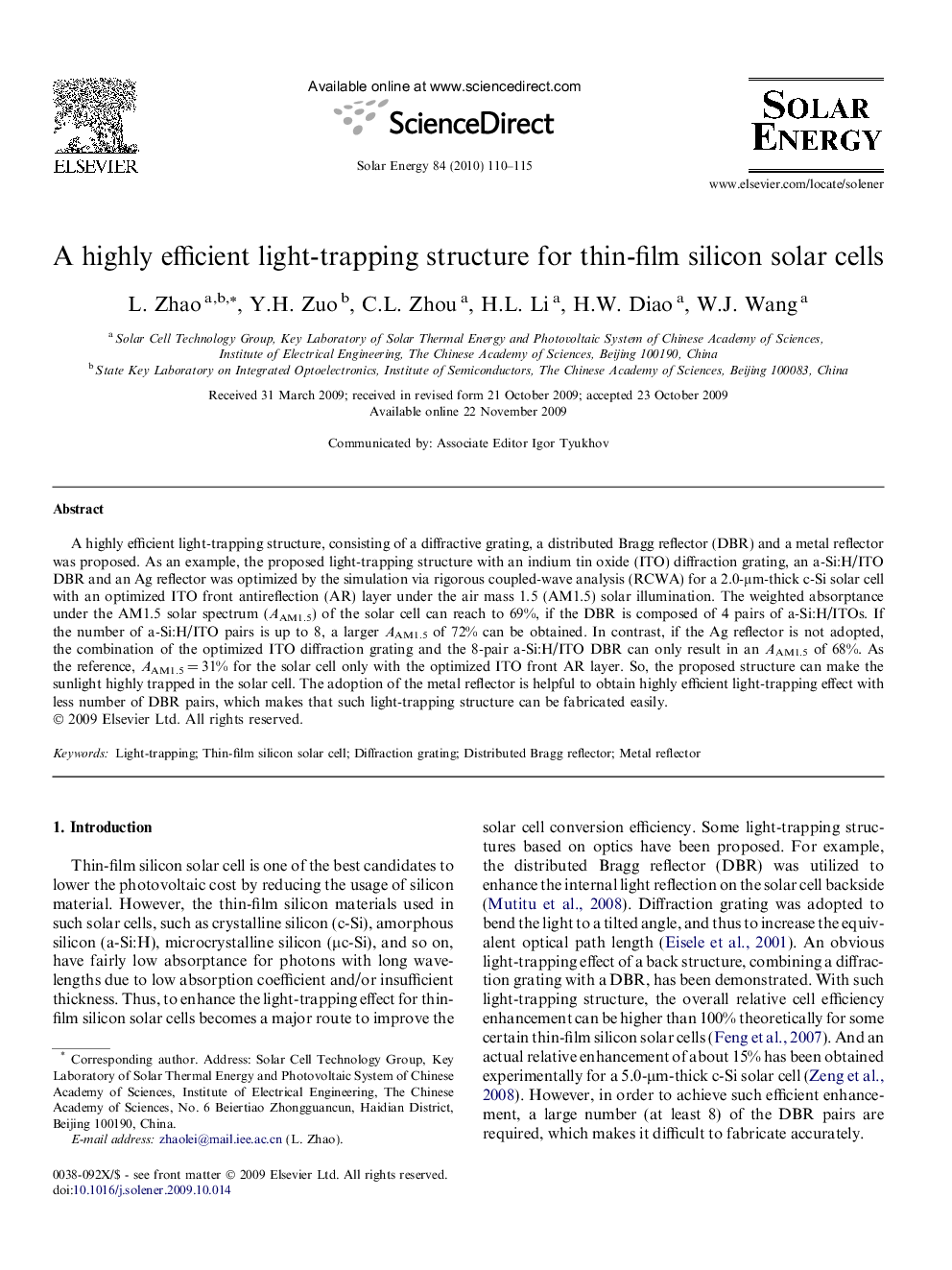| Article ID | Journal | Published Year | Pages | File Type |
|---|---|---|---|---|
| 1551410 | Solar Energy | 2010 | 6 Pages |
Abstract
A highly efficient light-trapping structure, consisting of a diffractive grating, a distributed Bragg reflector (DBR) and a metal reflector was proposed. As an example, the proposed light-trapping structure with an indium tin oxide (ITO) diffraction grating, an a-Si:H/ITO DBR and an Ag reflector was optimized by the simulation via rigorous coupled-wave analysis (RCWA) for a 2.0-μm-thick c-Si solar cell with an optimized ITO front antireflection (AR) layer under the air mass 1.5 (AM1.5) solar illumination. The weighted absorptance under the AM1.5 solar spectrum (AAM1.5) of the solar cell can reach to 69%, if the DBR is composed of 4 pairs of a-Si:H/ITOs. If the number of a-Si:H/ITO pairs is up to 8, a larger AAM1.5 of 72% can be obtained. In contrast, if the Ag reflector is not adopted, the combination of the optimized ITO diffraction grating and the 8-pair a-Si:H/ITO DBR can only result in an AAM1.5 of 68%. As the reference, AAM1.5 = 31% for the solar cell only with the optimized ITO front AR layer. So, the proposed structure can make the sunlight highly trapped in the solar cell. The adoption of the metal reflector is helpful to obtain highly efficient light-trapping effect with less number of DBR pairs, which makes that such light-trapping structure can be fabricated easily.
Related Topics
Physical Sciences and Engineering
Energy
Renewable Energy, Sustainability and the Environment
Authors
L. Zhao, Y.H. Zuo, C.L. Zhou, H.L. Li, H.W. Diao, W.J. Wang,
